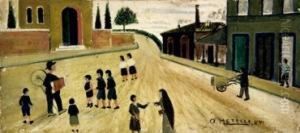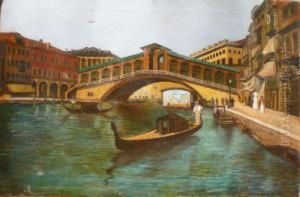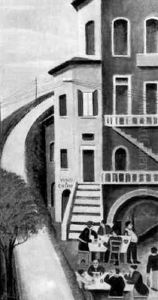Orneore Metelli Paintings
Orneore Metelli was an Italian painter born on July 3, 1872, in Terni, Umbria. Initially, he worked as a shoemaker and a decorative painter, which included ornamenting ceilings and walls for local houses and churches. His early life did not suggest that he would become a prominent figure in the art world; however, his passion for painting would eventually lead him to a celebrated career in the arts.
Metelli did not receive formal art education until later in life. It wasn't until he was in his forties that he began to study art seriously. In 1911, he started taking evening classes at the Perugia Art Institute while continuing to work as a decorative painter. His dedication to his craft led to the development of a distinctive style that combined traditional techniques with a unique perspective on everyday life.
In his paintings, Metelli often depicted scenes from his surroundings, portraying the rural landscapes and the people of his native Umbria with a sense of realism and a touch of idealism. His work was characterized by a keen observation of light and shadow, and a rich palette that added depth and warmth to his compositions. He showed a particular interest in capturing the effects of sunlight on architecture and nature, which became a hallmark of his work.
Metelli's career gained momentum in the 1920s and 1930s. He exhibited his work in major Italian cities and garnered attention from both critics and the public. Some of his most notable exhibitions included participation in the Venice Biennale and the Quadriennale di Roma. As his reputation grew, he received numerous awards and his paintings began to be collected by art enthusiasts in Italy and beyond.
Despite his success, Metelli remained deeply connected to his roots in Terni. He was a modest man who sought to portray the beauty and simplicity of the world he knew. Orneore Metelli passed away on September 24, 1938, in Terni, leaving behind a legacy as an artist who rose from humble beginnings to achieve significant acclaim in the world of Italian art. His works continue to be appreciated for their charm, technical skill, and the unique window they offer into the life and landscapes of early 20th-century Umbria.


